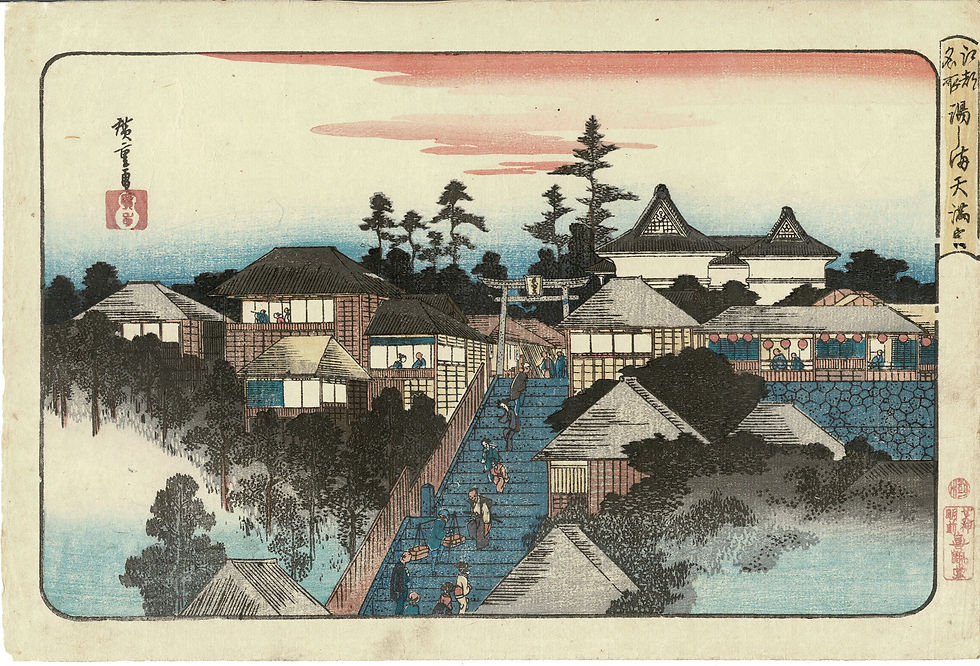
Fūkei Landschaften
HIROSHIGE (1797-1858)
Utagawa Hiroshige is, along with Hokusai, arguably the best-known ukiyo-e artist in the West. Hiroshige was born into a samurai family whose duty was to protect the royal residence, Edo Castle, from fire. Despite his official responsibilities, Hiroshige showed a precocious talent for art and, along with Hokusai, transformed ukiyo-e into a medium for depicting landscapes and scenes of everyday life in and around Edo (now Tokyo). Hiroshige's prints proved immensely popular among the capital's growing urban population as tourism and travel became prime leisure activities for the Edo middle class. The Fifty-Three Stations of the Tōkaidō series, one of Hokusai's more famous works, paralleled Hiroshige's travels along the eastern sea route. One Hundred Famous Views of Edo, published from 1856-59, allowed the Japanese to travel vicariously to the nation's capital and depicted some iconic views and landmarks in and around the city.
HOKUSAI (1760? -1849)
Over the seven decades of his artistic career, Katsushika Hokusai left an indelible mark on the art of the East and the West. Situated in a particularly fraught time in international politics, Hokusai lived and worked during the Edo period's waning as the Tokugawa shogunate's isolationist policies came under intense pressure from the West. While Hokusai produced works in all the standard subjects of ukiyo-e prints, he is best known for pushing colored woodblock printing into the landscape genre. Hokusai is mainly well known for his Thirty-Six Views of Mt Fuji and, especially, the single print from this series entitled 'The Great Wave off Kanagawa.' The influence of Hokusai in the West can be seen in the works of Degas, Monet, Gauguin, and Whistler, as well as in the development of Art Nouveau in Europe.
Kawase Hasui ( 1883 – 1957)
Prior to his passing, he was given the title of one of Japan's living treasures.
Today, Hasui is one of the hottest artists in Japanese woodblock prints. His most recognizable works include his landscapes portraying red temples juxtaposed to the pure serenity of a fresh snowfall. The last print he was known to have produced recently fetched a world record price at Christies



















